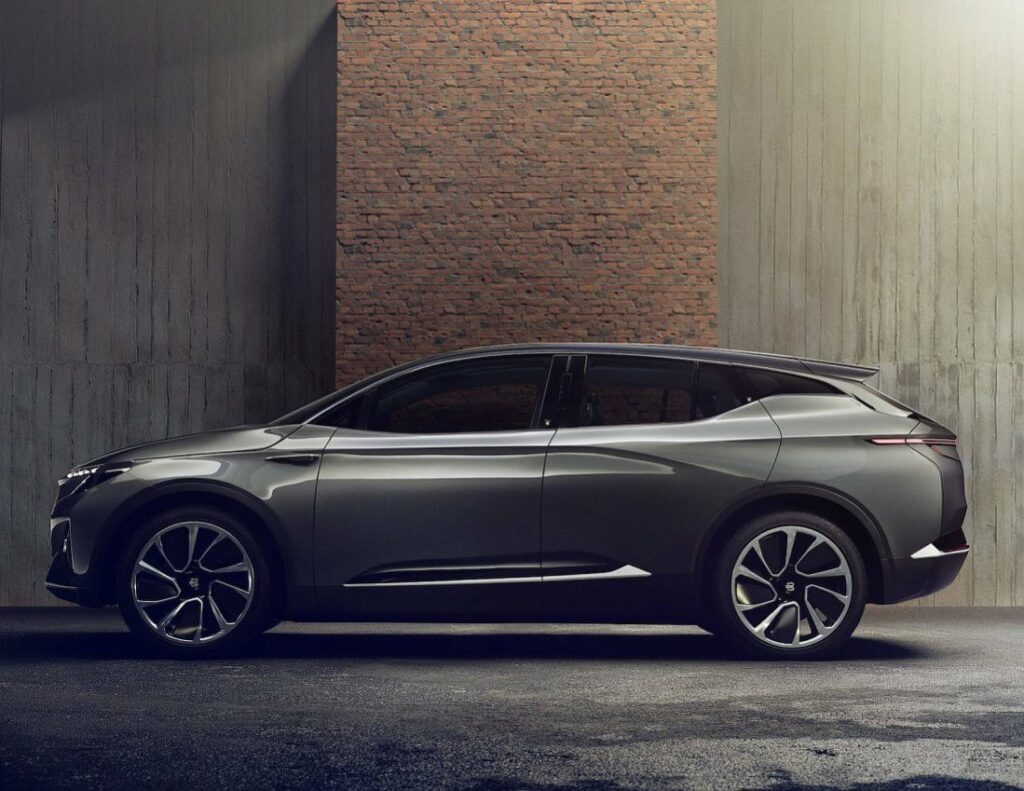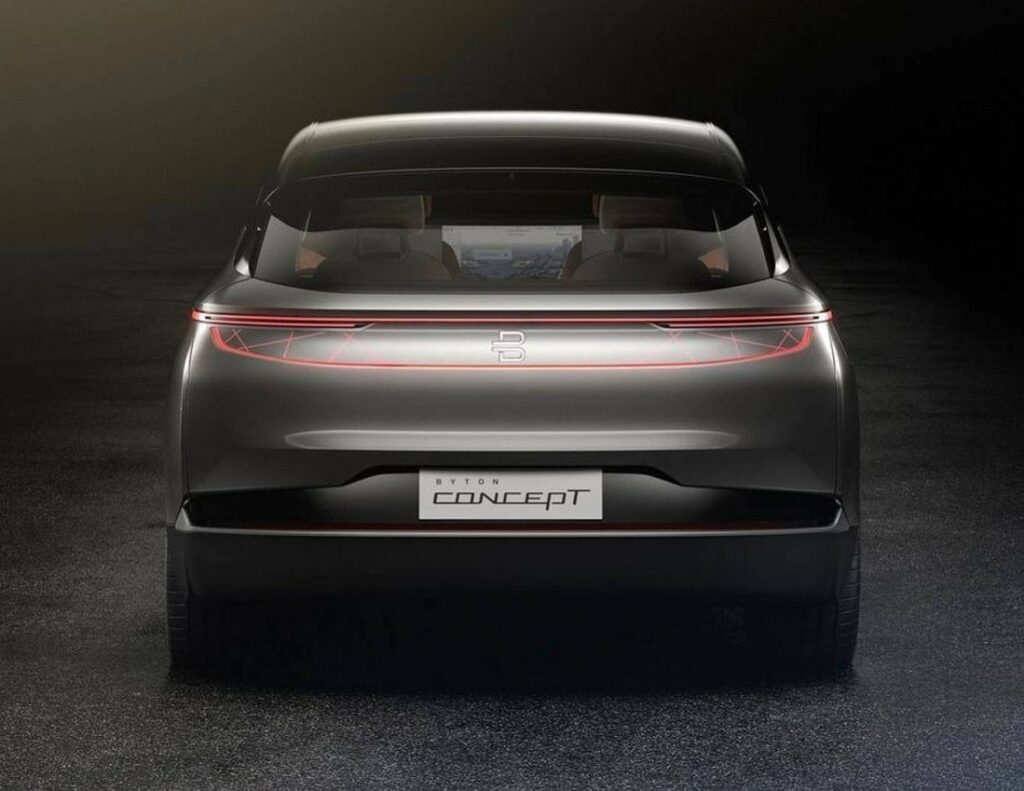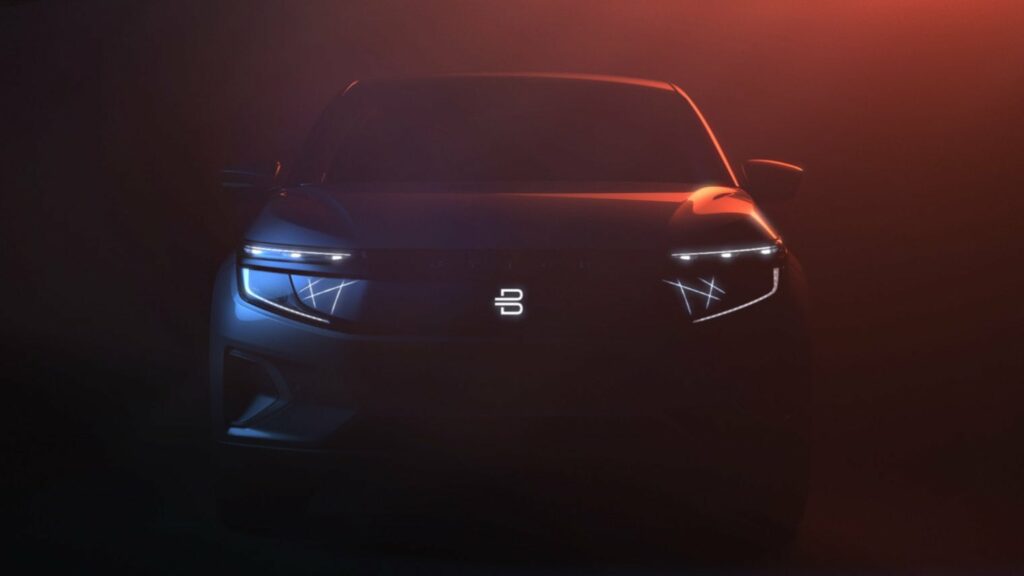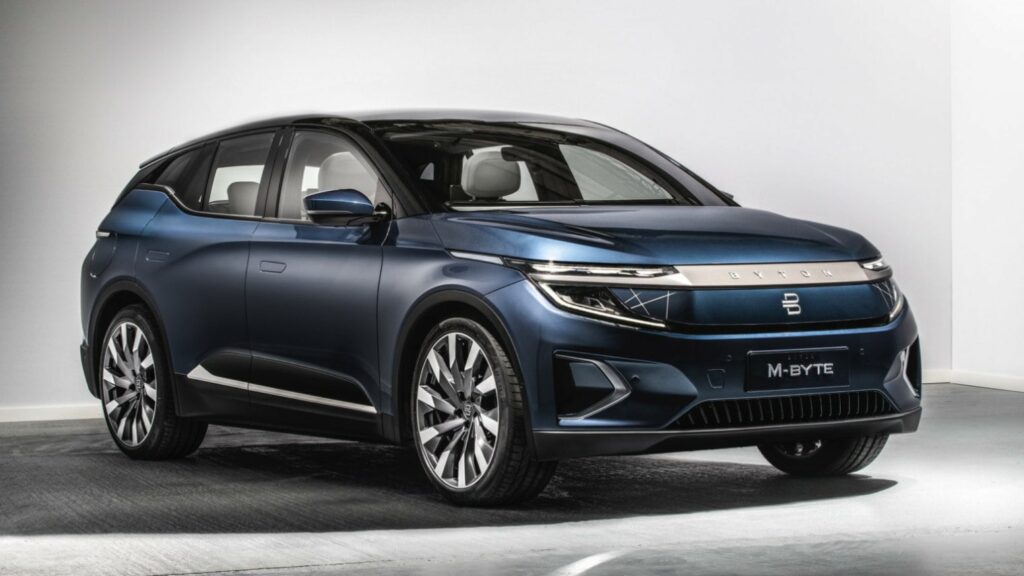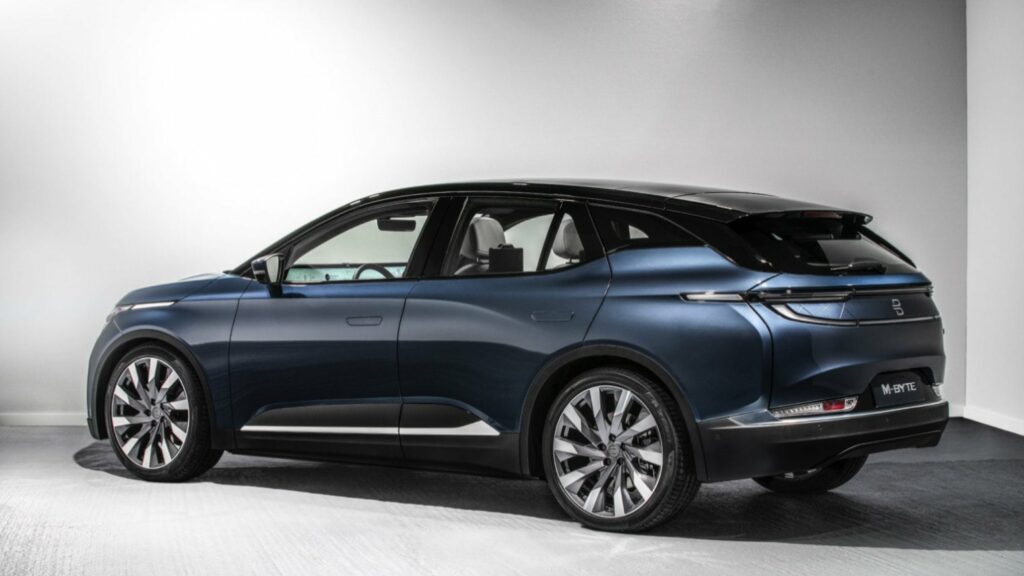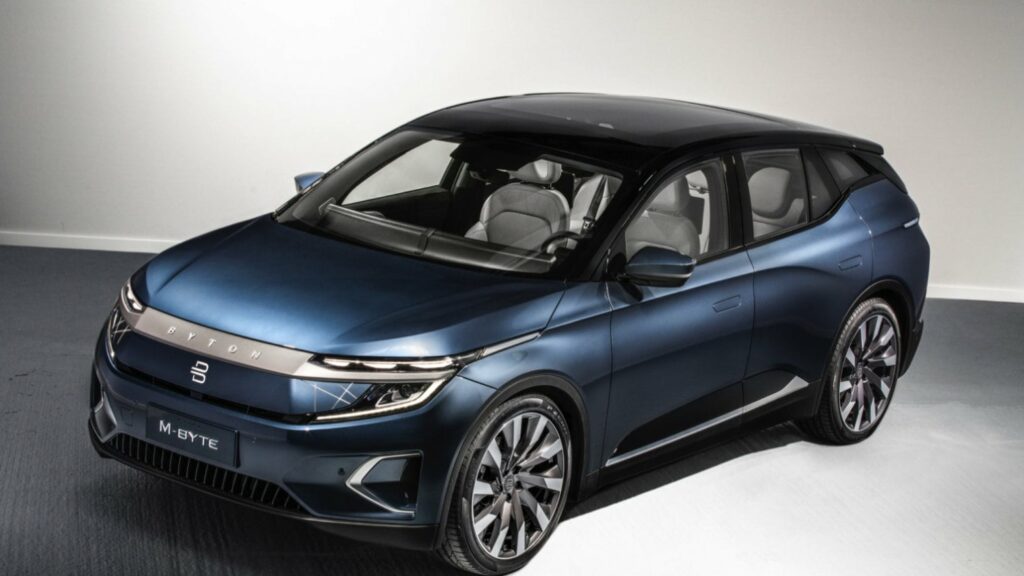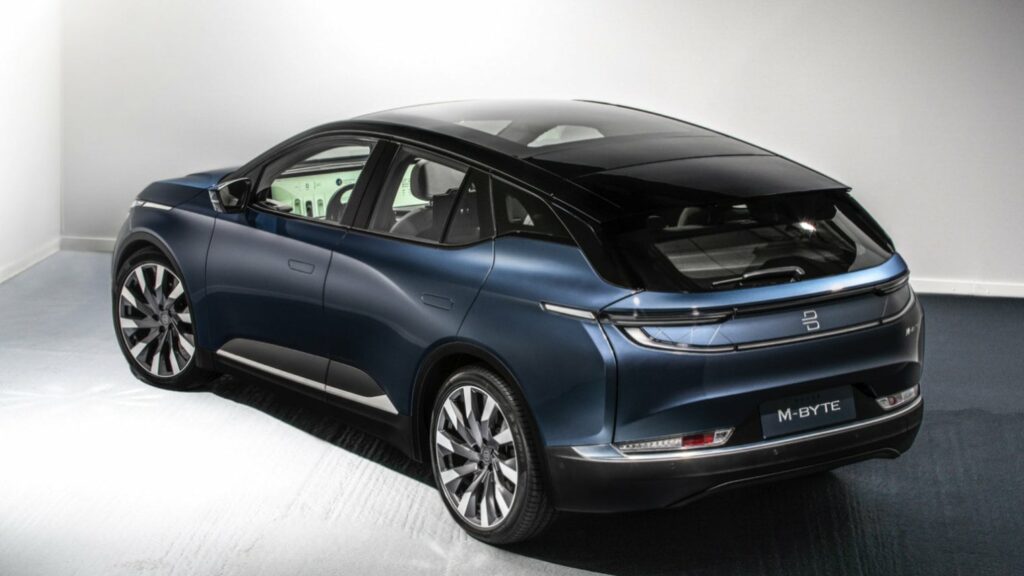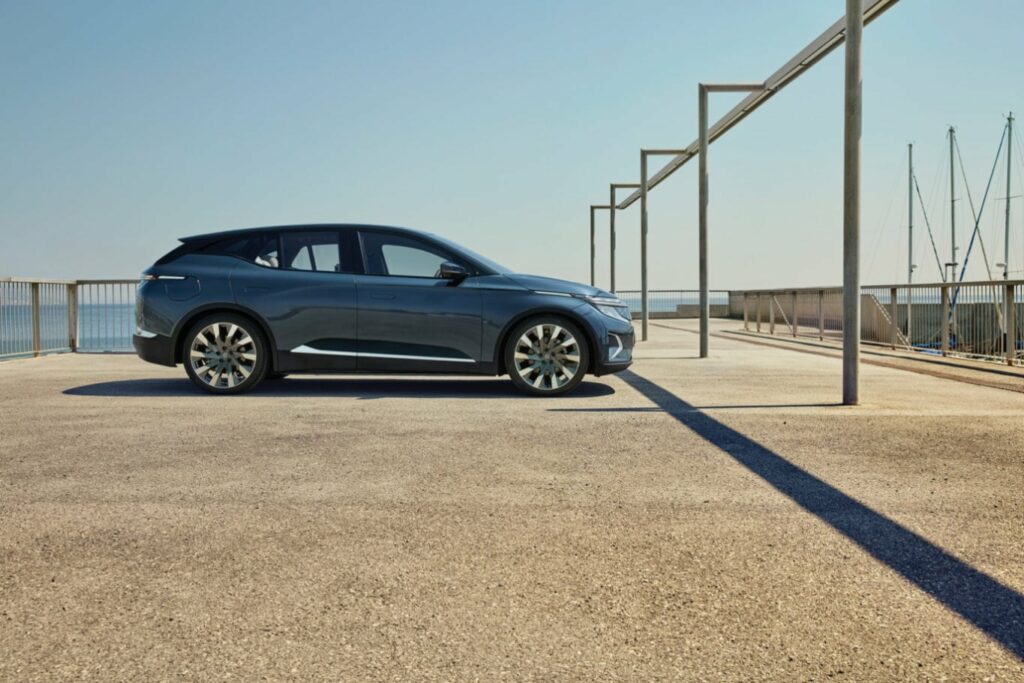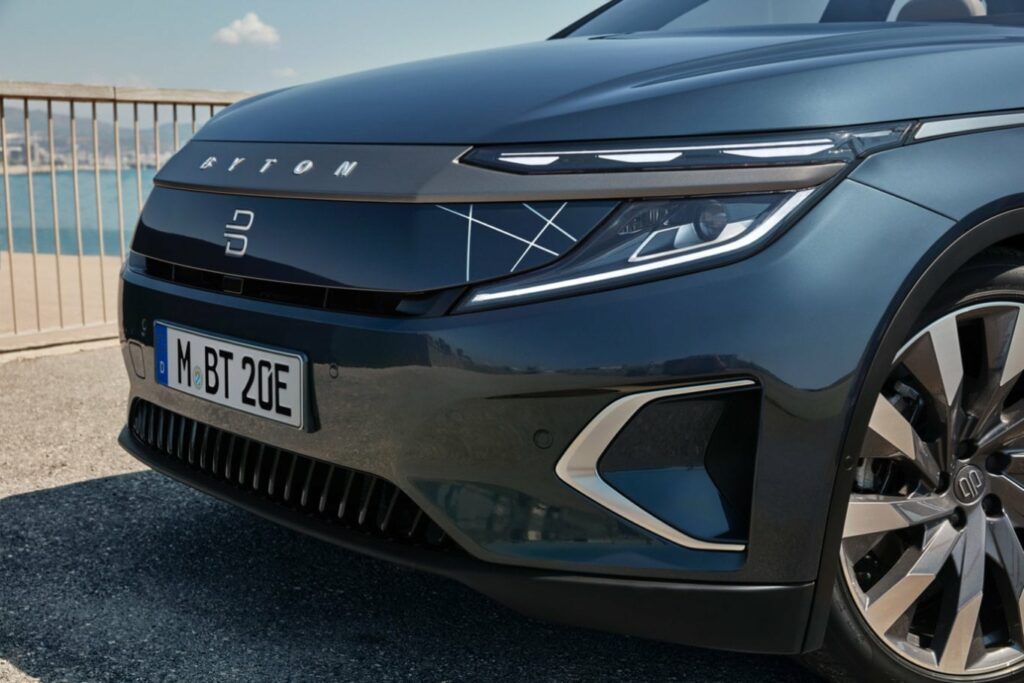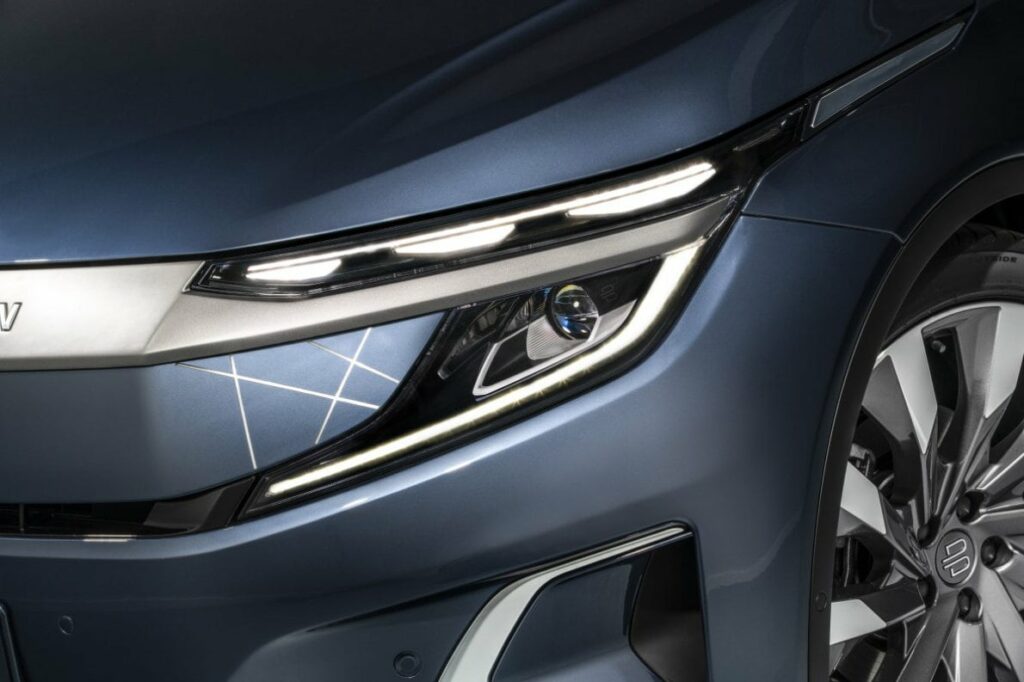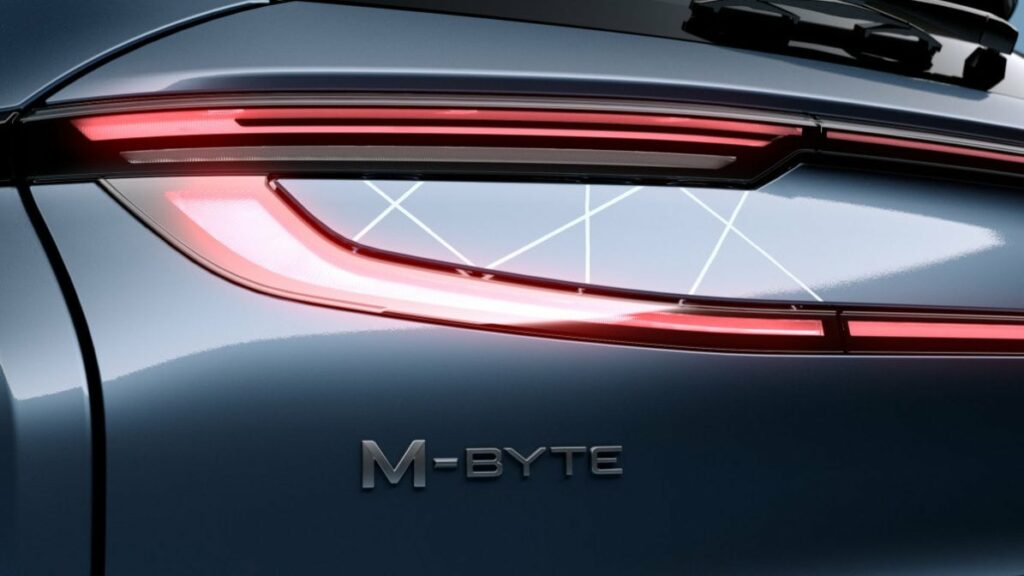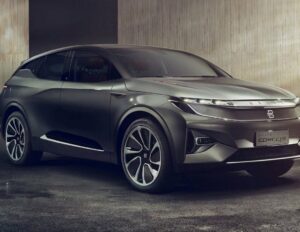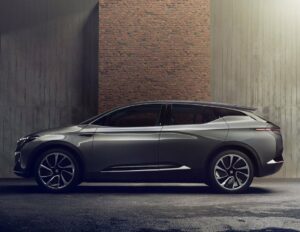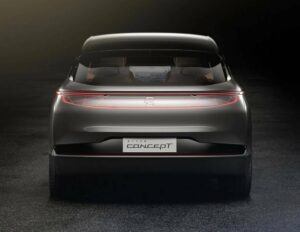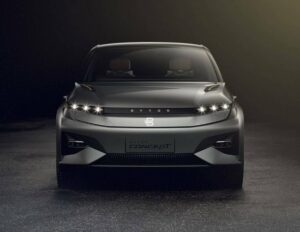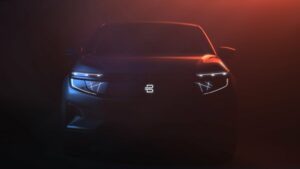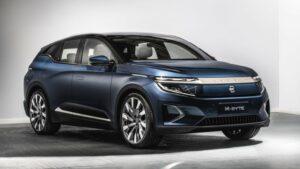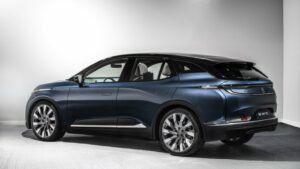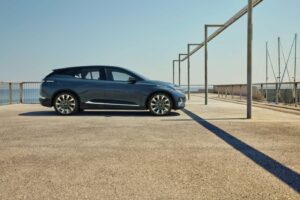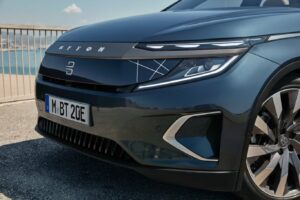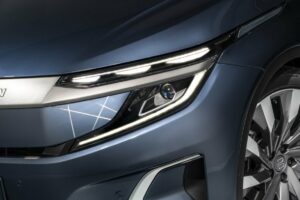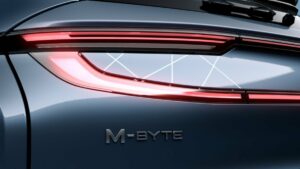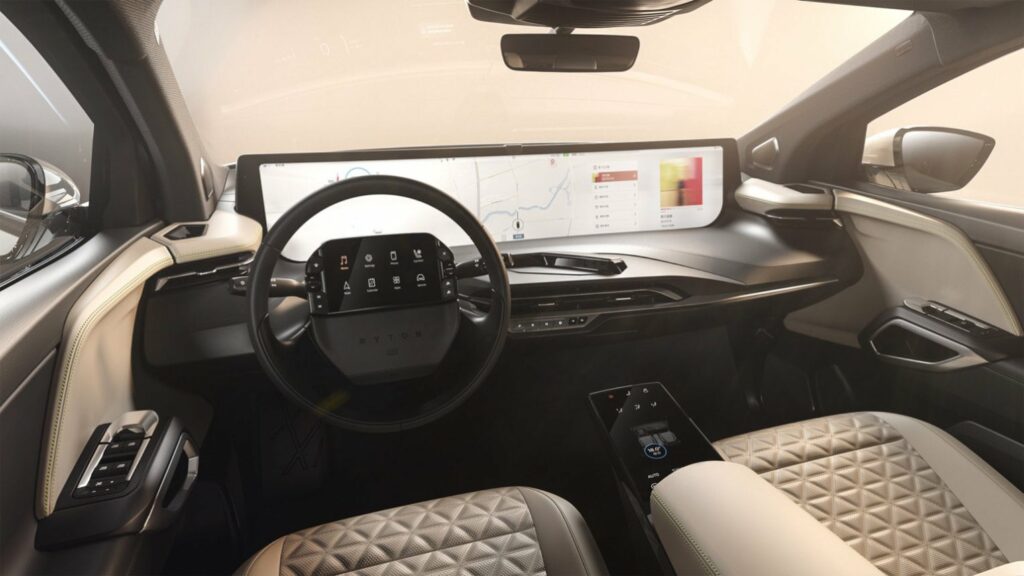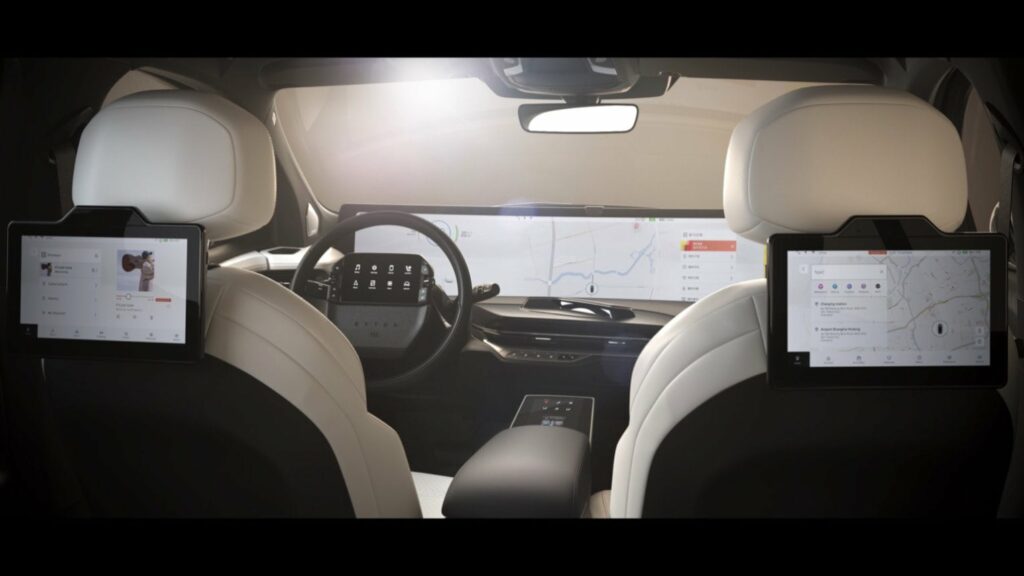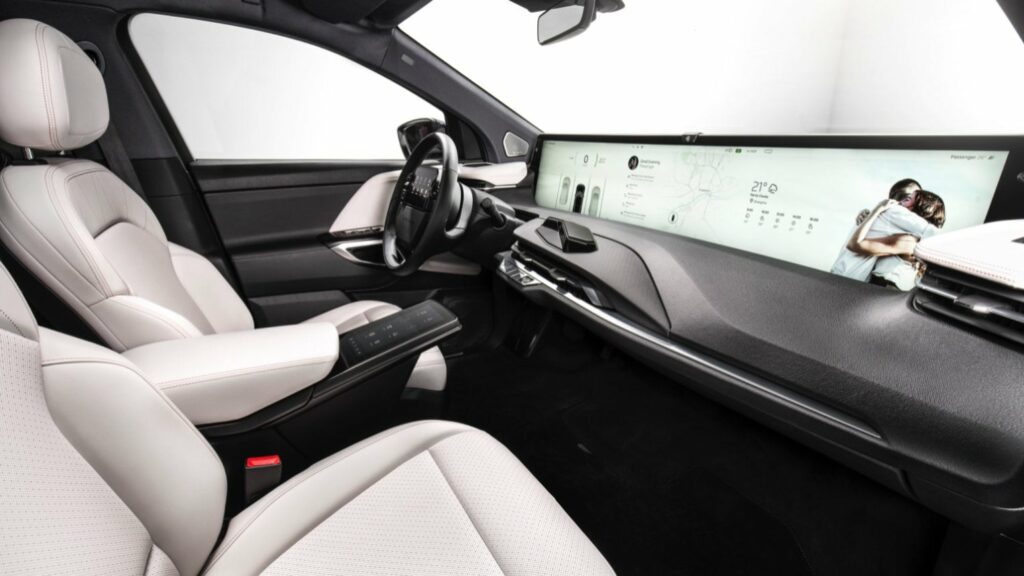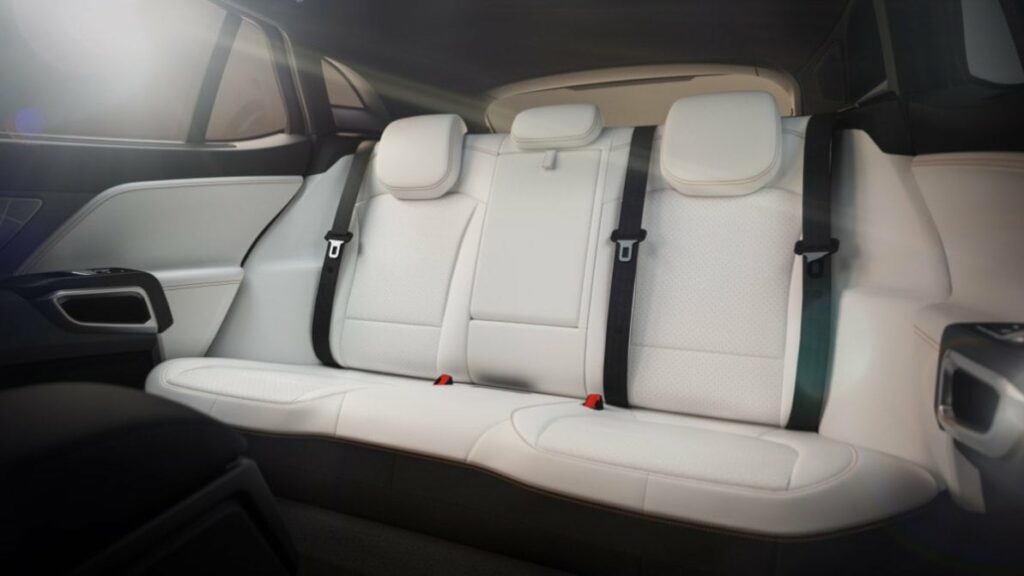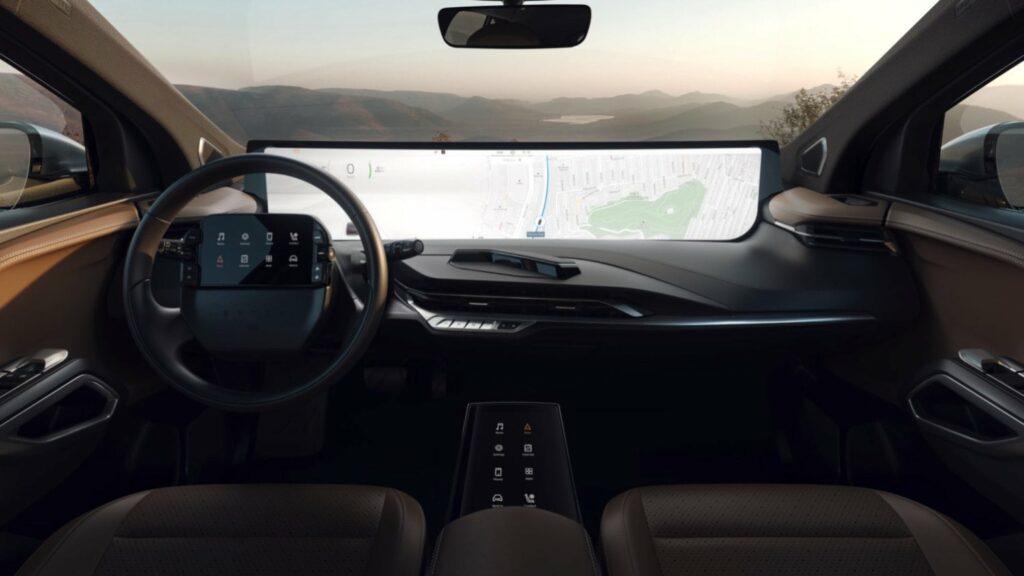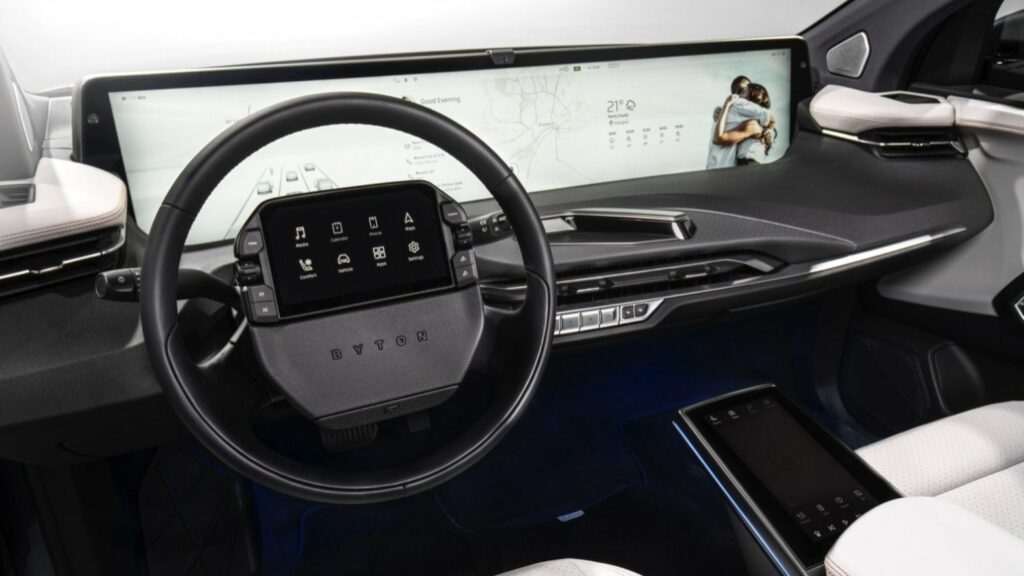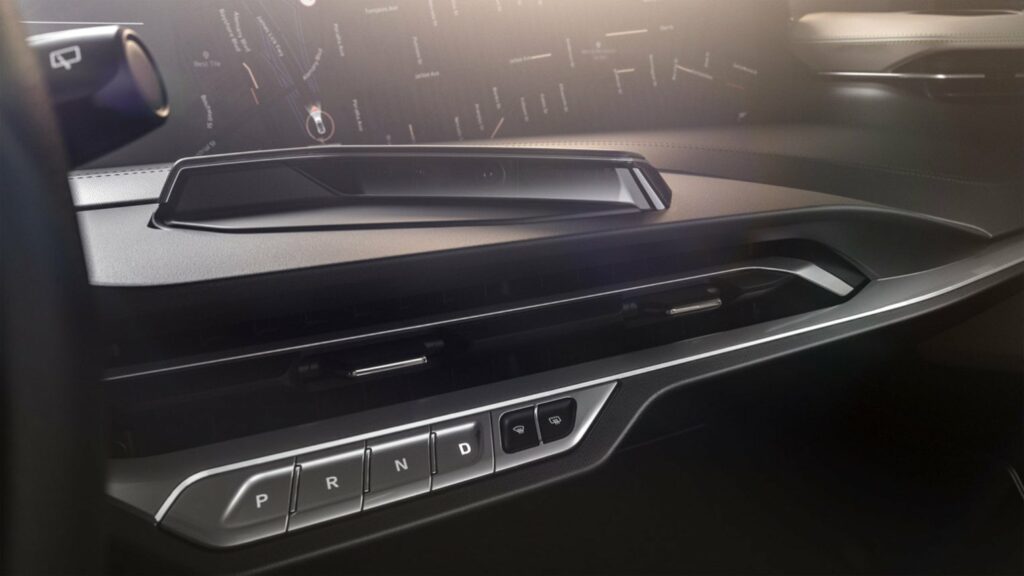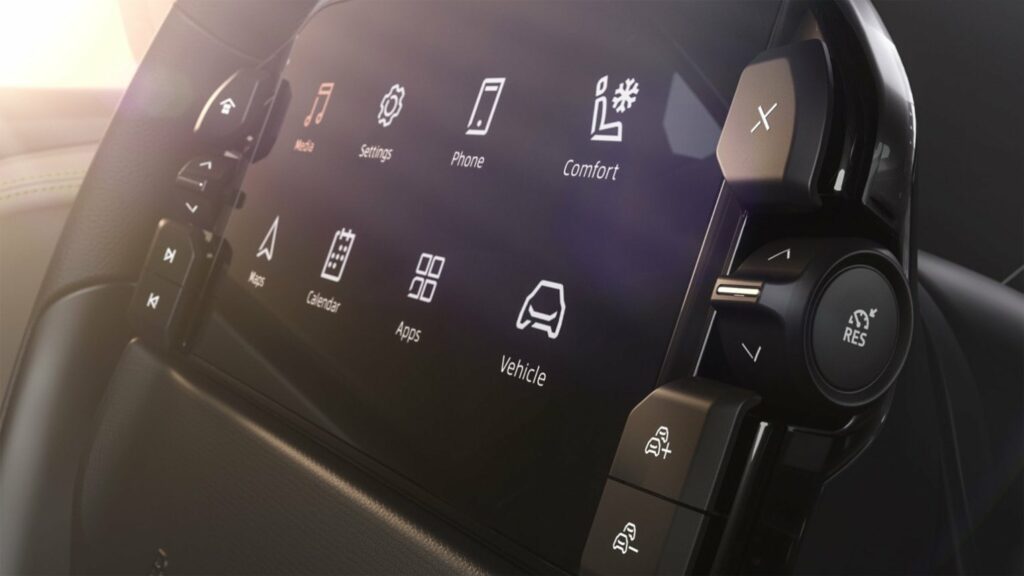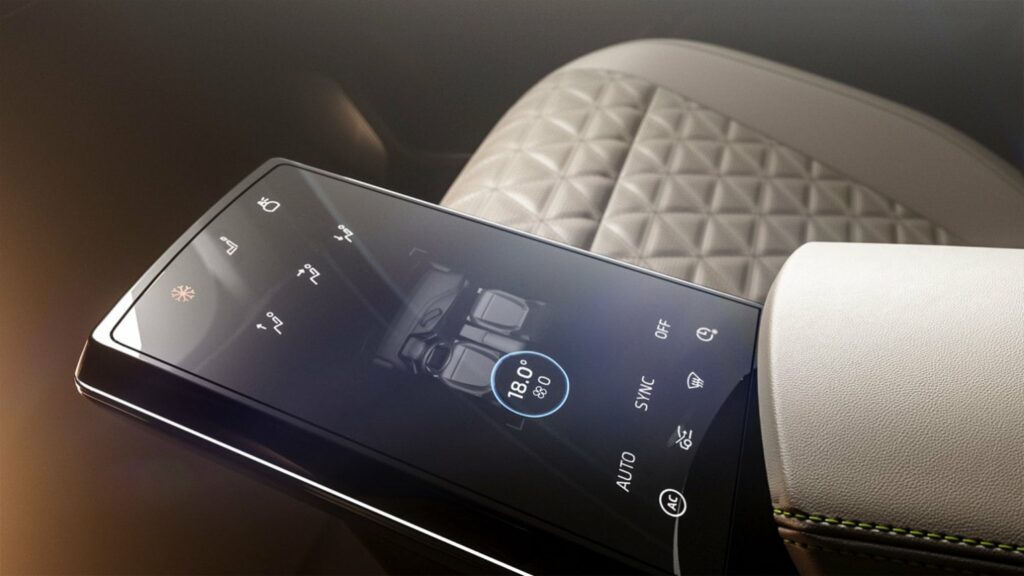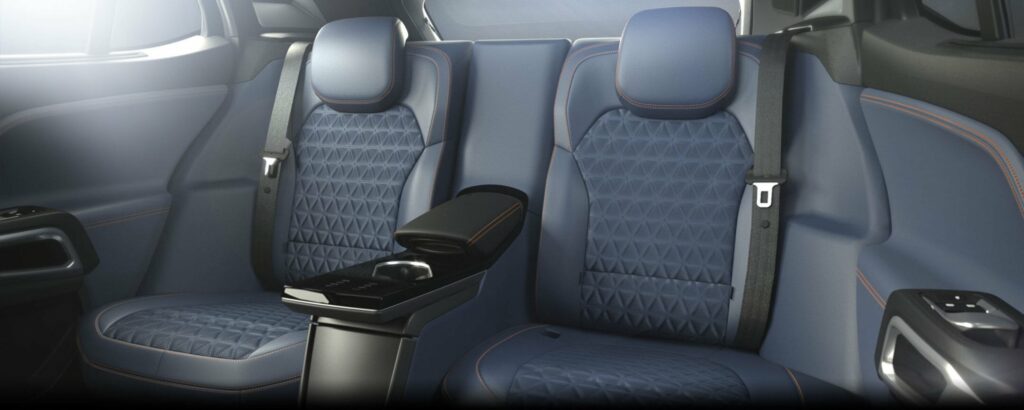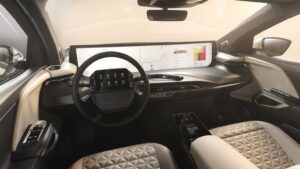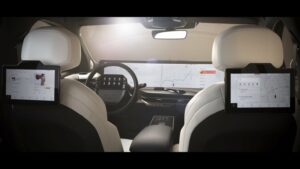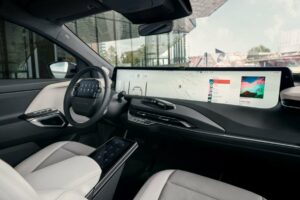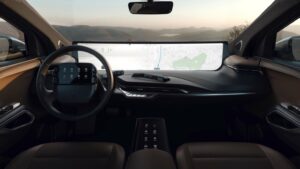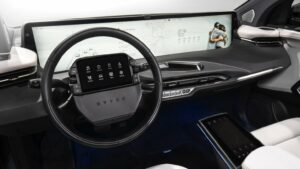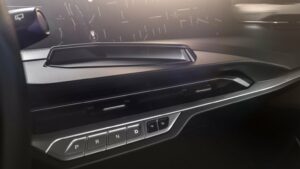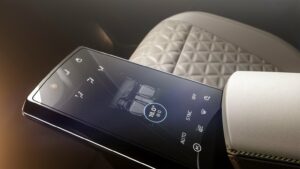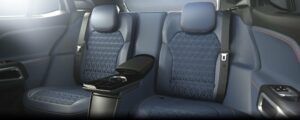The Byton M-Byte is an electric crossover that is the first production model from Chinese electric car manufacturer Byton. The model is designed from scratch and is the premium embodiment of the brand’s electric mobility in the form of a mid-size SUV.
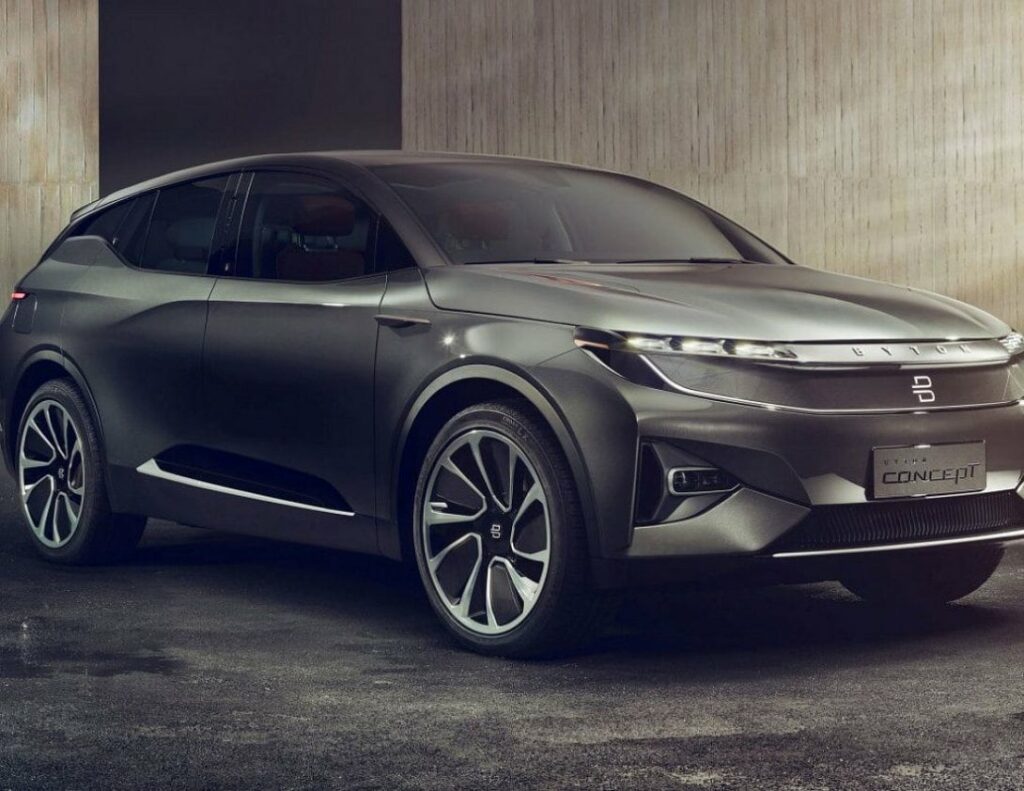
Byton M-Byte Transmission.
The Byton M-Byte is available with two transmission options: a base rear-wheel drive with 200 kW (272 hp) and a maximum all-wheel drive with 300 kW (408 hp). In the basic configuration, the dynamics of acceleration of the electric car to the first hundred takes 7.5 seconds, in the top version with all-wheel drive – 5.5 seconds. For both versions, the top speed is fixed at 190 km/h.
Byton M-Byte battery and charging
The base rear-wheel-drive version of the Byton M-Byte is equipped with a 72 kW⋅h battery that provides the crossover with 430 km of range according to the NEDC cycle or 360 km according to the WLTP.
The top-end all-wheel-drive crossover is equipped with a 95 kW⋅h battery that can travel 550 km (NEDC) or 435 km according to WLTP on a single charge.
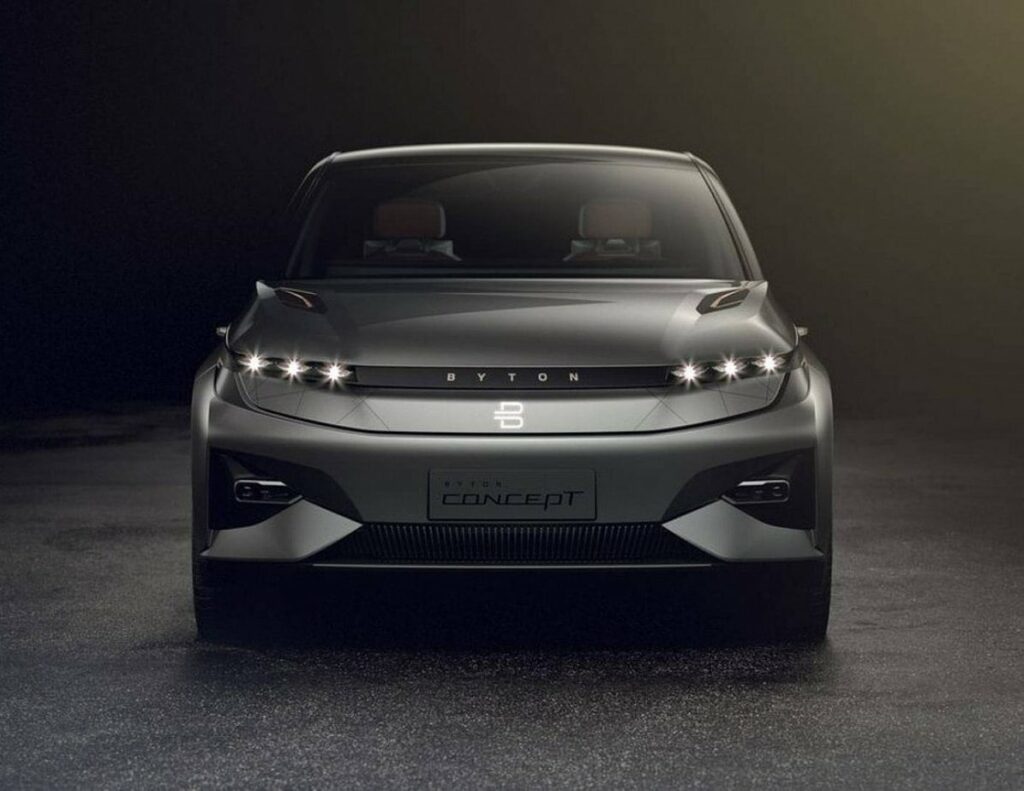
Depending on the sales region, the Byton M-Byte will be adapted to local charging standards, among them GBT/CCS Combo 1 or CCS Combo 2.
DC fast charging of the electric car will be available with up to 150 kW of power and will charge the battery pack to 80% of capacity in 35 minutes. From AC power sources, the electric car can be charged with capacities from 3.7 to 22 kW.
Byton M-Byte design
The electric car has a unique exterior, which was designed with the specifics of the electric nature of the model’s powertrain in mind. The creators sought to give the image maximum futuristic and novelty, so the appearance is a lot of unusual, including the original design of the front and rear optics, large wheels with an original pattern.
Inside the electric car, the main element is a curved 48-inch screen that replaces the faceplate. It allows for gesture and voice control, and the company claims it is the world’s largest in-car display for a production model.
The huge screen does not allow direct touch controls; there is a separate touchpad on the seven-inch screen in the steering wheel for that purpose.

One of the unique technologies implemented in the M-Byte is facial recognition, which can be used instead of the usual key to lock and unlock the electric car.
Byton drivers also have access to the Byton Life app, which provides interaction between the car and mobile devices. In doing so, the car has digital learning capabilities, whereby the car generates specific memos for each user while analyzing schedules, locations, preferences, and data from the app. In addition, M-Byte can recognize the voices of different users.
| Performance | |
| Acceleration 0 – 100 km/h | 7.5 sec |
| Top Speed | 190 km/h |
| Electric Range | 400 km |
| Total Power |
200 kW (272 PS)
|
| Total Torque | 410 Nm |
| Drive | Rear |
| Battery and Charging | |
| Battery Capacity | 105.0 kWh |
| Battery Useable | 95.0 kWh |
| Europe | |
| Charge Port | Type 2 |
| Port Location |
Right Side – Rear
|
| Charge Power | 11 kW AC |
| Charge Time (0->400 km) | 10h15m |
| Charge Speed | 39 km/h |
| Fastcharge Port | CCS |
| FC Port Location |
Right Side – Rear
|
| Fastcharge Power (max) | 150 kW DC |
| Fastcharge Time (40->320 km) | 35 min |
| Fastcharge Speed | 480 km/h |
| Energy Consumption | |
| EVDB Real Range | |
| Range | 400 km |
| Vehicle Consumption | 238 Wh/km |
| CO2 Emissions | 0 g/km |
| Vehicle Fuel Equivalent | 2.7 l/100km |
| NEDC Ratings | |
| Range | 505 km |
| Rated Consumption | No Data |
| Vehicle Consumption | 188 Wh/km |
| CO2 Emissions | 0 g/km |
| Rated Fuel Equivalent | No Data |
| Vehicle Fuel Equivalent | 2.1 l/100km |
| WLTP Ratings | |
| Range | 460 km |
| Rated Consumption | No Data |
| Vehicle Consumption | 207 Wh/km |
| CO2 Emissions | 0 g/km |
| Rated Fuel Equivalent | No Data |
| Vehicle Fuel Equivalent | 2.3 l/100km |
|
Rated = official figures as published by manufacturer. Rated consumption and fuel equivalency figures include charging losses.
|
|
|
Vehicle = calculated battery energy consumption used by the vehicle for propulsion and on-board systems.
|
|
| Real Energy Consumption Estimation between 164 – 328 Wh/km | |
| City – Cold Weather * | 232 Wh/km |
| Highway – Cold Weather * | 328 Wh/km |
| Combined – Cold Weather * | 275 Wh/km |
| City – Mild Weather * | 164 Wh/km |
| Highway – Mild Weather * | 264 Wh/km |
| Combined – Mild Weather * | 211 Wh/km |
| Energy use for each trip will vary considerably depending on the driver and the conditions. Therefore, we have provided a range of estimates which can be useful in developing an understanding of the potential benefits of this technology. | |
| Dimensions and Weight | |
| Length | 4875 mm |
| Width | 1970 mm |
| Width with mirrors | No Data |
| Height | 1665 mm |
| Wheelbase | 2950 mm |
| Weight Unladen (EU) | 2500 kg |
| Gross Vehicle Weight (GVWR) | No Data |
| Max. Payload | No Data |
| Cargo Volume | 550 L |
| Cargo Volume Max | 1450 L |
| Cargo Volume Frunk | No Data |
| Roof Load | No Data |
| Tow Hitch Possible | No Data |
| Towing Weight Unbraked | 0 kg |
| Towing Weight Braked | 0 kg |
| Vertical Load Max | No Data |
| Miscellaneous | |
| Seats | 5 people |
| Isofix | No Data |
| Turning Circle | No Data |
| Platform | No Data |
| Car Body | SUV |
| Segment | JE – Executive |
| Roof Rails | No |
| EV Dedicated Platform | No Data |
Home and Destination Charging (0 -> 100%)
A public charging station is required to use the highest possible charging rate. The EVSE/charging station’s charging capacity affects how long it takes to fully charge the battery. The table below shows all possible options for fully charging the Byton M-Byte 95 kWh 2WD.
In Europe, plugging an electric car into an outlet is often as easy as plugging it into a household outlet, but there are differences from country to country. The table below shows the different ways to charge the Byton M-Byte 95 kWh 2WD, but in some countries some chargers may not be available.
Type 2 (Mennekes – IEC 62196)

| Charging Point | Max. Power | Power | Time | Rate |
|
Standard 11.0 kW On-Board Charger
|
||||
| Wall Plug (2.3 kW) | 230V / 1x10A | 2.3 kW | 48h45m | 8 km/h |
| 1-phase 16A (3.7 kW) | 230V / 1x16A | 3.7 kW | 30h15m | 13 km/h |
| 1-phase 32A (7.4 kW) | 230V / 1x32A | 7.4 kW | 15h15m | 26 km/h |
| 3-phase 16A (11 kW) | 400V / 3x16A | 11 kW | 10h15m | 39 km/h |
| 3-phase 32A (22 kW) | 400V / 3x16A | 11 kW | 10h15m | 39 km/h |
| Optional 22.0kW On-Board Charger | ||||
| Wall Plug (2.3 kW) | 230V / 1x10A | 2.3 kW | 48h45m | 8 km/h |
| 1-phase 16A (3.7 kW) | 230V / 1x16A | 3.7 kW | 30h15m | 13 km/h |
| 1-phase 32A (7.4 kW) | 230V / 1x32A | 7.4 kW | 15h15m | 26 km/h |
| 3-phase 16A (11 kW) | 400V / 3x16A | 11 kW | 10h15m | 39 km/h |
| 3-phase 32A (22 kW) | 400V / 3x32A | 22 kW | 5h15m | 76 km/h |
Fast Charging (10 -> 80%)
If you want to enjoy driving an electric car, one of the most important features to consider is the number of miles per hour the car can travel while charged. This is called the “range” of the car. All electric cars have a certain range, even if they are 100% charged. This is because they do not have an internal combustion engine to lean on if you need to drive a long distance.
Max. Power: The maximum power provided by the charging point
Avg. Power: The average power provided by the charging point during a session of 10% to 80%.
Time: the time it takes to charge from 10% to 80%
Speed: the average charging rate during the session of 10% to 80%
Combined Charging System (CCS Combo 2)
| Charging Point | Max. Power | Avg. Power | Time | Rate |
| CCS (50 kW DC) | 50 kW | 50 kW | 84 min | 200 km/h |
| CCS (100 kW DC) | 100 kW | 90 kW | 47 min | 350 km/h |
| CCS (150 kW DC) | 150 kW | 120 kW | 35 min | 480 km/h |
| Brand | Byton |
| Model | M-Byte 95 kWh 2WD |
| Body Style | SUV |
| Car Engine | electric |
| Motor power | 200 |
| Maximum Torque, Nm | 410 |
| Battery Energy, kWh | 105.0 |
| Power reserve (NEDC/EPA/WLTP), km | - / - / 400 |
| Level Charging (230/400/DC), hours | - / - / 0.47 |
| Electrical Acceleration, 0-100 km/h (0-62.1 mph) in sec | 190 |
| Top Speed, km/h | 7.5 |
